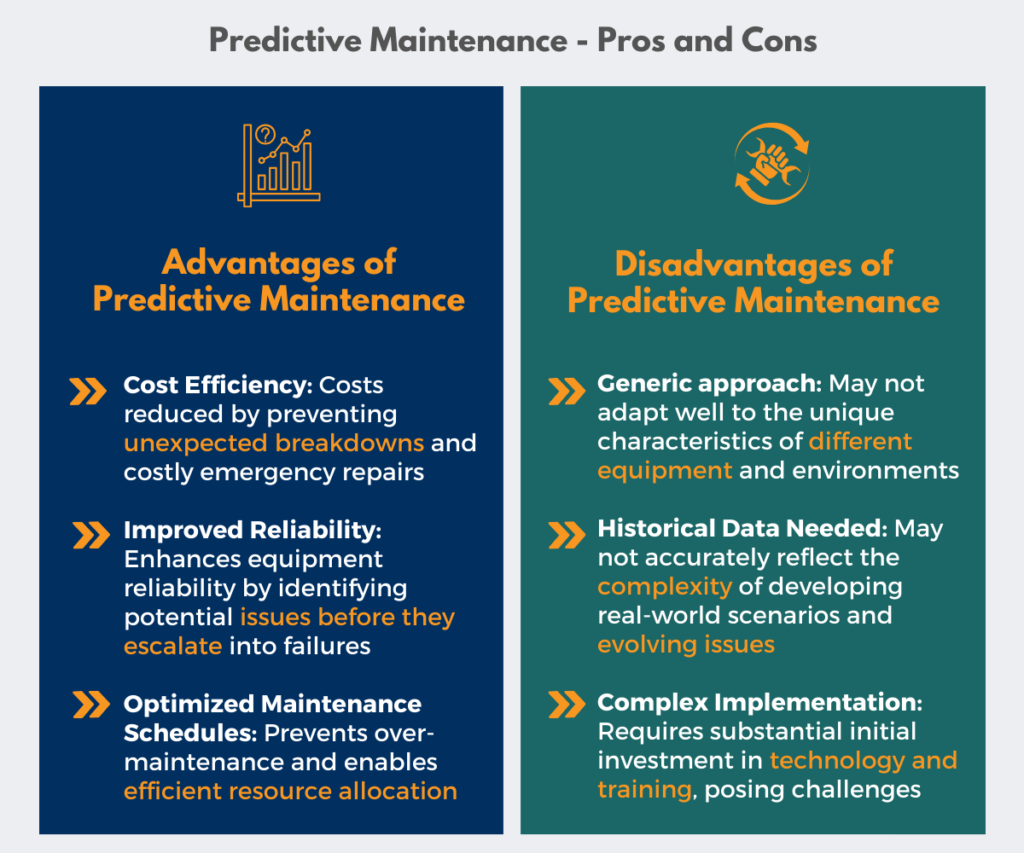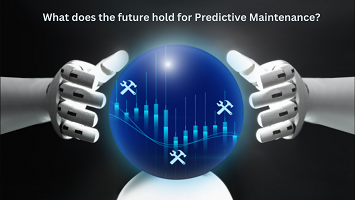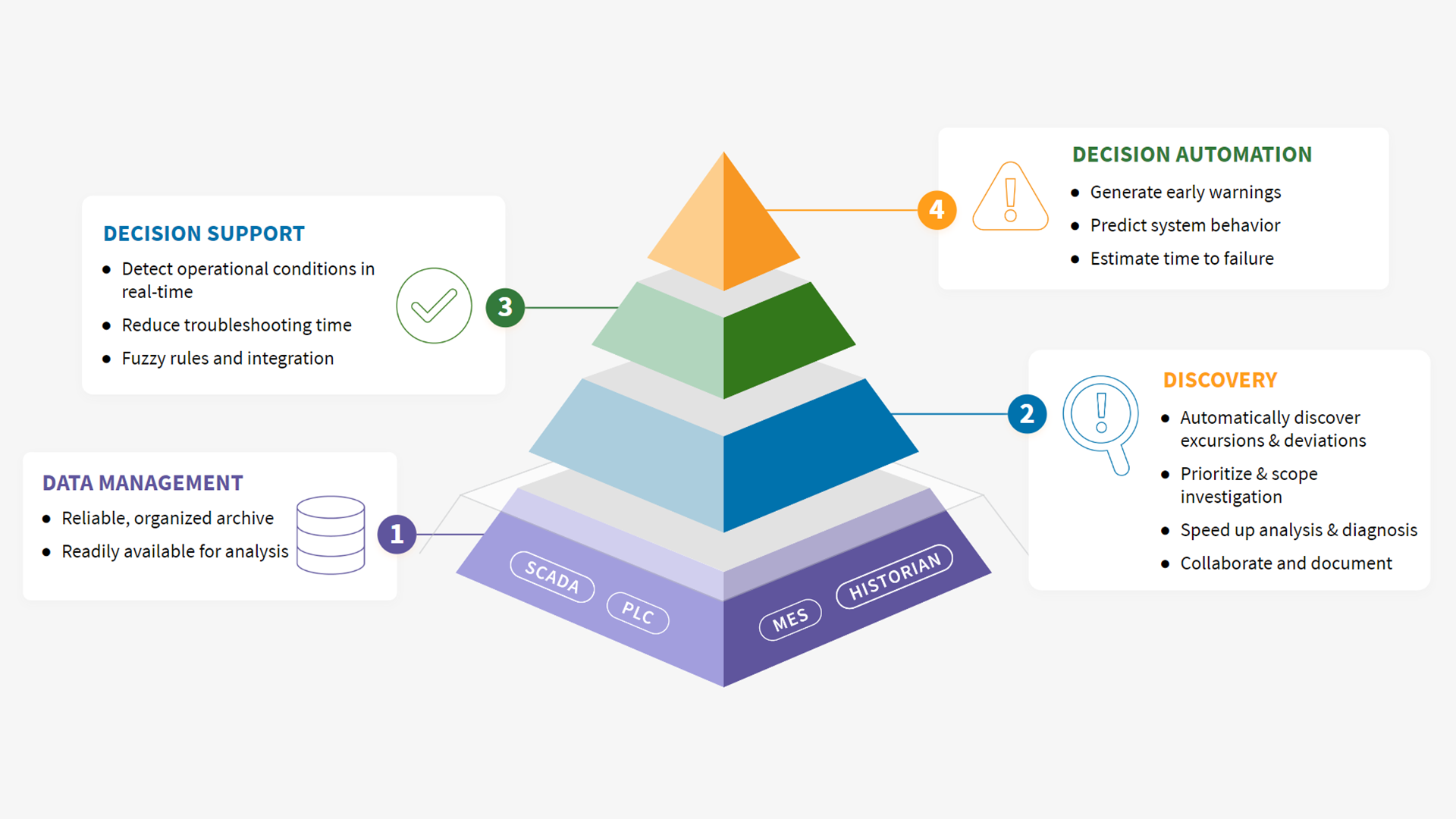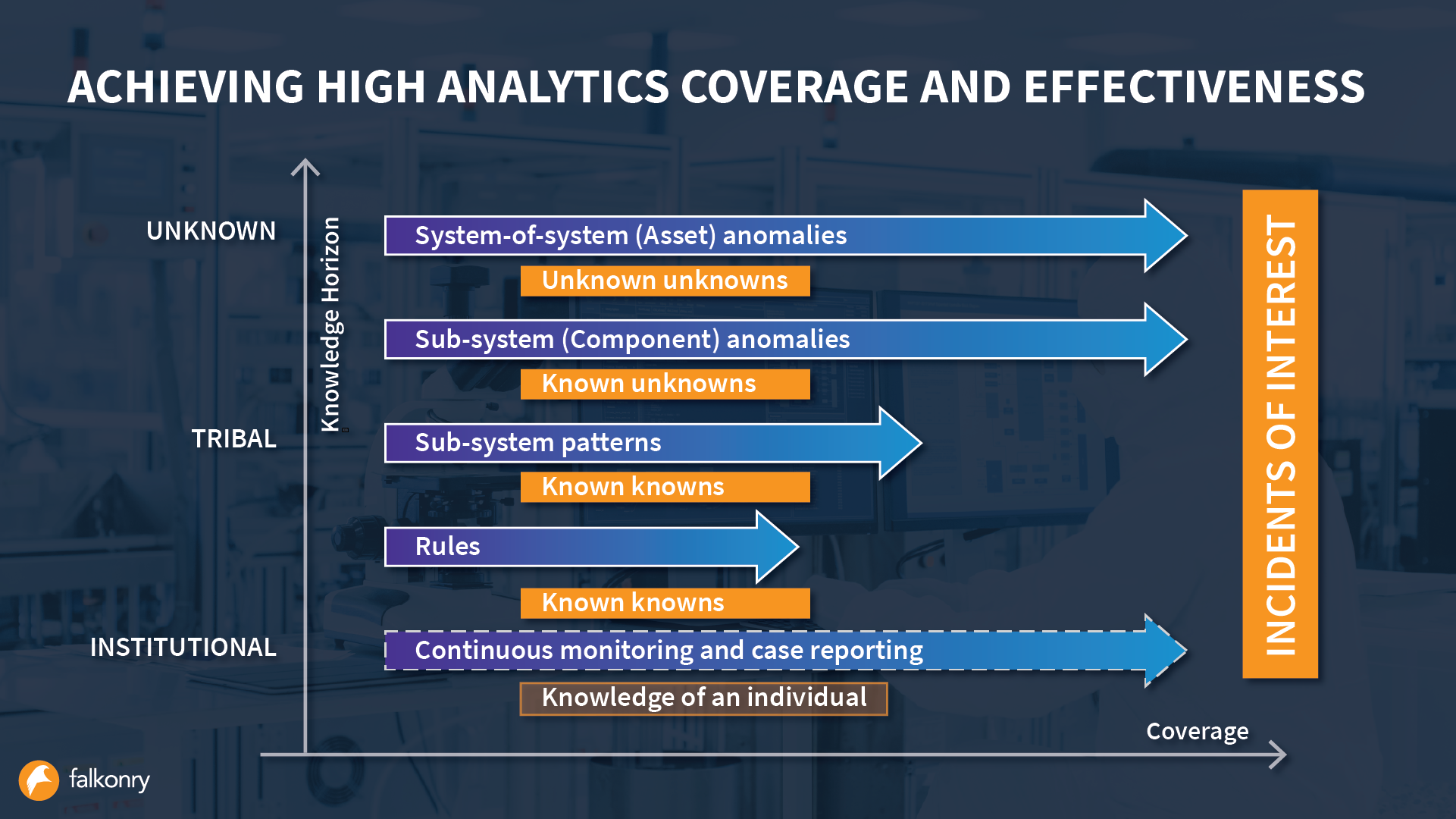Predictive Maintenance
The convergence of accessible technologies is reshaping maintenance practices in today’s rapidly evolving manufacturing landscape. With the increasing affordability of sensors, streamlined data transfer technologies, efficient data storage, and advanced analytics, new approaches to reliability enhancement are becoming feasible. This shift facilitates the broader implementation of advanced Reliability Centered Maintenance methodologies, such as Predictive Maintenance (PdM), across diverse applications.
PdM utilizes measurements and analytic models to anticipate maintenance needs by identifying early signs and estimating time-to-failure. The approach aims for effective resource allocation and production scheduling. However, its implementation complexity is acknowledged, representing an evolving frontier in maintenance strategy, building on the same technologies and capabilities that make Condition-Based Monitoring (CBM) such an exciting space.
What is predictive maintenance?
Predictive maintenance is a proactive strategy employed in various industries, notably manufacturing, to enhance equipment reliability and operational efficiency. It involves utilizing intricate data models, real-time data analytics, and advanced sensors to identify early indicators of machine degradation to estimate the time-to-failure of machinery and equipment. An essential component of predictive maintenance is anomaly detection, which helps highlight deviations from normal operations.
Unlike traditional reactive maintenance methods that address issues after they occur, predictive maintenance leverages data-driven insights to anticipate equipment failures. By continuously monitoring the condition of machinery, PdM allows engineers and maintenance teams to schedule timely interventions and preventive measures. This proactive approach aims to prevent unexpected downtimes, reduce repair costs, and optimize maintenance schedules.
The ultimate goal of this maintenance strategy is to ensure smoother and more reliable operations while maximizing overall productivity. In summary, predictive maintenance is a forward-looking strategy that harnesses data and technology to optimize equipment performance and drive operational excellence.

Advantages of Predictive Maintenance
Predictive maintenance (PdM) aims to offer several compelling advantages to asset-intensive industries and businesses. One of its main objectives is to reduce unplanned downtimes. By harnessing data-driven insights and sophisticated data models, PdM attempts to forecast equipment failures in advance. This foresight allows for the scheduling of maintenance activities during planned downtimes, ensuring that production processes run smoothly and uninterrupted. As a result, not only is operational efficiency boosted, but companies also save valuable time and resources that would have otherwise been lost to emergency repairs.
Cost savings represent another compelling advantage of this strategy. By identifying issues when they are still in their nascent stages, this proactive approach prevents expensive breakdowns and the need for costly emergency repairs. By addressing problems before they result in equipment failure, companies can significantly reduce their maintenance and repair expenses, translating into substantial cost savings over time.
The advantages of PdM also extend to optimizing maintenance schedules, aligning them with the actual condition of equipment. By avoiding over-maintenance and directing resources more efficiently, companies can further reduce operational costs while maximizing the utility of their assets. This fine-tuned approach to maintenance ensures that resources are allocated where they are needed most, increasing the overall profitability of an organization.

Disadvantages of Predictive Maintenance
Predictive Maintenance (PdM), while offering significant advantages, does not come without its limitations. One of the drawbacks of Predictive Maintenance is its inherent “one size fits all” approach, which often struggles to accommodate the unique characteristics of various equipment and systems. This lack of ability to adapt can lead to suboptimal outcomes and less accurate predictions.
Moreover, predictive maintenance relies on historical data to forecast future failures. However, the complexity of real-world scenarios means that similar problems may not recur in identical ways, resulting in patterns that are hard to discern. Consequently, the lack of sufficient examples to learn from diminishes the confidence in preventing the next issue effectively.
To address these limitations, the implementation of anomaly detection emerges as a valuable solution. By focusing on minimizing excursion risks and enhancing the efficiency of technicians and engineers, anomaly detection sidesteps the shortcomings of predictive maintenance. It empowers professionals to swiftly identify and address anomalies as they occur, adapting to the ever-changing landscape of equipment behavior.
Predictive Maintenance vs Preventive Maintenance
Both preventive and predictive maintenance strategies have a common goal to minimize surprises and unplanned downtimes that increase the instances of reactivity to failures. Generally speaking, the cost of reactive maintenance is high and therefore a preventive or predictive maintenance program is put is place to minimize the costs.
Preventive maintenance is scheduled in a fixed time period for each asset or component depending on the period of known recurring failures and periodic visual inspection. Preventive maintenance offers several benefits over reactive maintenance, these include:
- Improved reliability and equipment lifespan
- Fewer unplanned downtimes
- Reduced health and safety risks
However, preventive maintenance also requires more people to perform the maintenance work as well as spare inventories for replacements. This can add to costs significantly, and therefore organizations limit the preventive maintenance only to critical assets where the reactive maintenance would be costlier.
Predictive maintenance, on the other hand, is scheduled as needed based on the deteriorating condition of assets. PdM overcomes the problem of over-maintenance faced by preventive maintenance and helps optimize the maintenance schedule by letting the asset run till its failure. Successful implementation of predictive maintenance requires a comprehensive understanding of the asset’s preset conditions and failure trends to accurately forecast its remaining useful life.
Predictive Maintenance vs Condition-based Maintenance
While both Predictive Maintenance (PdM) and Condition-based Maintenance (CBM) aim to minimize downtime and costs stemming from unforeseen failures and superfluous maintenance, they do so with distinct temporal perspectives and approaches.
CBM is more concerned with the present health state of equipment, utilizing sensor data to compute its current condition. If the health state indicates faultiness, maintenance is scheduled; otherwise, operations continue. The method for detecting faults varies, encompassing simple thresholding to intricate machine learning algorithms. CBM employs interventions upon detecting faulty behavior, although complexities in both machine nature and data, challenge the process.
Contrastingly, PdM’s essence lies in forecasting future equipment health. While both approaches share benefits and employ algorithms and sensor data, they diverge in their temporal focus. In PDM, decisions stem from anticipated future states rather than the current one. This advanced perspective permits scheduled maintenance even before signs of faults arise. However, the implementation of PdM requires substantial historical data to create predictive models for estimating future failures. As data accrues and models improve, more accurate predictions emerge.
Predictive maintenance is not:
- A one-time Implementation
- A replacement for human expertise
- A standalone strategy – it needs to be integrated with other maintenance strategies like preventive, corrective, and proactive maintenance
What are the challenges in predictive maintenance?
Predictive maintenance execution faces multiple challenges and setbacks owing to the complexity of industrial systems, availability and quality issues in data, and unpredictable failures. Due to high variability and complexity of the operations, the assets failures do not follow a repeatable pattern.
These fundamental reasons require a holistic approach that combines technological advancements, data management enhancements, organizational adaptation, and investments in training and resources to successfully implement predictive maintenance solutions and reap their benefits in terms of cost savings and operational efficiency.


